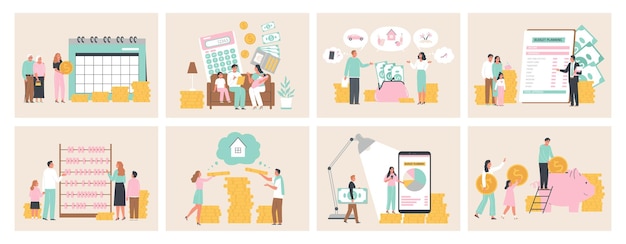
As the year nears its closure, now is the perfect moment to begin discussing your household’s budgetary needs. We all constantly strive to enhance our financial circumstances, and we’ve discovered that the construction and regular discussion of a budget significantly aid our monetary journey. Yet, it doesn’t guarantee that we agree on every facet of the financial plan. Thus, is it possible to form a household budget naturally and without conflict?
KNOW YOUR REASONS
The prime motivation for budget formation is pivotal. Occasionally, you and your partner may disagree financially, but deliberating on the primary motive can bolster alignment. After all, why put in the effort and endure potential stress if the motive isn’t strong enough or evident?
Some frequent reasons for creating a budget are:
– Debt clearance
– Emergency fund creation
– Retirement planning
– Travel provision
– Home improvement costs
– House purchasing savings
Your motivation doesn’t necessarily have to fall into these categories but should entail a distinct purpose. This reason would drive both you and your partner to stick to your budget.
DESIGN YOUR ROADMAP
In the wake of understanding your motive, share it with your partner and reciprocate the understanding. Even if their reasons vary, respect their viewpoint. As with all relationship aspects, communication and respect are the cornerstones to success, particularly in creating a budget.
Subsequently, discuss an effective strategy to achieve your financial goals. Effective queries include:
– Your goal timelines.
– Your saving targets.
– Possible monthly savings.
– Potential cutbacks both can agree upon.
These questions lay the groundwork for the budget, thereby enhancing its effectiveness.
CATEGORIZE YOUR BUDGET
After robust dialogue, it’s now time to set your budget categories. Each month, these categories show your actual spending against your assumed expenditure. Often, this reality deviates from initial assumptions, thus forming an essential budgetary aspect.
Consider these key expenditure categories:
– Income
– Recurring expenses
– Automobiles/Transportation
– Food/Drinks
– Household expenses
– Travel costs
– Clothing
– Gifts
– Luxuries
– Savings
– Miscellaneous expenses
Firstly, project the amount for each category. While this might initially create friction among couples, adopting an open mind and being patient can mitigate these disagreements.
The following categories are usually easiest to forecast:
– Income
– Recurring expenses
– Automobiles/Transportation
Bounds for these categories can guide the allocation for the remaining ones.
Here’s a sample budget with ballpark figures:
Income – $5,600.00
Recurring Expenses – $1,100.00
Automobiles/Transportation – $1,600.00
Food/Drinks – $800.00
Household – $400.00
Travel – $167.00
Clothing – $75.00
Gifts – $75.00
Luxury – $400.00
Savings – $933.00
Misc – $50.00
Always remember, the plan might look perfect on paper, but real life might play out differently due to unexpected expenses.
RESOLVING BUDGETARY DISPUTES
Though my partner and I often disagree, we hold mutual respect for each other’s viewpoints. We aim to achieve financial independence once our youngest leaves the nest. Therefore, we regularly address any deviations in the budget, make necessary changes, or accommodate any concerns, ensuring that we sufficiently allocate resources. Maintaining respect and open communication regarding budget direction is always our foremost priority.
If you bear these points in mind when designing your household budget, you’re certainly on the path to success. What techniques have you used to avoid fights during budget formation? Were they effective, or did you have to modify your approach along the way?


